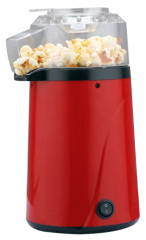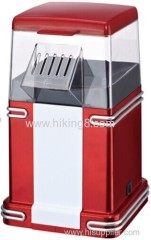
|
Hiking Electronic CO., Ltd.
|
mini hot air popcorn maker
| Price: | 6.0 USD |
| Payment Terms: | T/T,L/C,WU |
| Place of Origin: | Zhejiang, China (Mainland) |
|
|
|
| Add to My Favorites | |
| HiSupplier Escrow |
Product Detail
110-240V 50/60Hz 1200w
G.W.: 12.5kg N.W.: 11.5kg
)Popcorn made by hot air circulationless calories
A healthy and tasty snack for the whole famil
Electric Electric mini air popcorn maker 1200w
Item No.: PM264
| Feature |
| 110-240V 50/60Hz 1200w G.W.: 12.5kg N.W.: 11.5kg )Popcorn made by hot air circulationless calories A healthy and tasty snack for the whole family. |
| Packing |
| Gift box Size:15.8*15.8*28.6cm Carton Size: 49*49*58.5cm Qty: 12pcs per carton 1x20"FCL: 2400pcs 1x40"FCL: 4968pcs 1x40HQ: 5820pcs |
| Contact |
| we will keep online every work day.if you have any questions for products plz contact me Email:sales@ hiking8.com |
mini air popcorn maker 1200w
1.110-240V 50/60Hz 1200W
2.Popcorn made by hot air circulationless calories
3.A healthy and tasty snack for the whole family.
4.Uses hot-air instead of oil, creating healthful snack .A healthy and tasty snack for the whole family.
Popcorn Maker
Early popcorn history
Biblical accounts of "corn" stored in the pyramids of Egypt are misunderstood. The "corn" from the bible was probably barley. The mistake comes from a changed use of the word "corn," which used to signify the most-used grain of a specific place. In England, "corn" was wheat, and in Scotland and Ireland the word referred to oats. Since maize was the common American "corn," it took that name -- and keeps it today.
It is believed that the first use of wild and early cultivated corn was popping.
The oldest ears of popcorn ever found were discovered in the Bat Cave of west central New Mexico in 1948 and 1950. Ranging from smaller than a penny to about 2 inches, the oldest Bat Cave ears are about 4,000 years old.
Popcorn was integral to early 16th century Aztec Indian ceremonies. Bernardino de Sahagun writes: "And also a number of young women danced, having so vowed, a popcorn dance. As thick as tassels of maize were their popcorn garlands. And these they placed upon (the girls') heads."
In 1519, Cortes got his first sight of popcorn when he invaded Mexico and came into contact with the Aztecs. Popcorn was an important food for the Aztec Indians, who also used popcorn as decoration for ceremonial headdresses, necklaces and ornaments on statues of their gods, including Tlaloc, the god of rain and fertility.
An early Spanish account of a ceremony honoring the Aztec gods who watched over fishermen reads: "They scattered before him parched corn, called momochitl, a kind of corn which bursts when parched and discloses its contents and makes itself look like a very white flower; they said these were hailstones given to the god of water."
Writing of Peruvian Indians in 1650, the Spaniard Cobo says, "They toast a certain kind of corn until it bursts. They call it pisancalla, and they use it as a confection."
The use of the moldboard plow became commonplace in the mid-1800s and led to the widespread planting of maize in the United States.





























